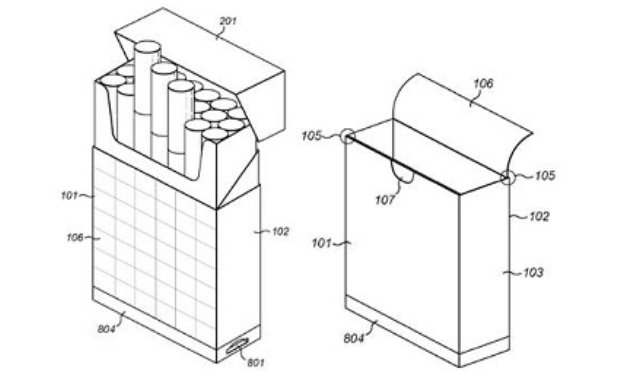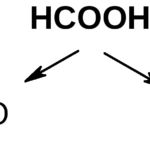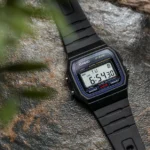The design of packaging for cigarettes requires more than just aesthetics. It requires precise measurements as well as careful evaluation of materials, regulations, and the user experience. In this thorough guide, we’ll go deep into the dimensions of cigarette boxes, such as cigarette box dimensions and cigarette pack dimensions in cm size, dimensions of a cigarette box as well as cigarette pack sizes, dimensions of a box for cigarettes size, dimensions of a cigarette, as well as the size of custom cardboard boxes. Through examining industry specifications, material, the regulatory effects, and designing practices, you’ll get a thorough comprehension of how an easy application can help with branding, conformity, as well as functionality.
1. Standard Cigarette Box Dimensions
Understanding cigarette box size begins with the standard measurements of popular pack types:
- Regular (King Size) Packs:
Typical outer cigarette pack dimensions are around 85 mm (H) × 55 mm (W) × 22 mm (D). This is designed to house 20 cigarettes, each about 84 mm long and 7–8 mm in diameter (their cigarette dimensions), plus room for a foil lining.
- Slim Packs:
Featuring a slimmer profile, these packs measure roughly 85 mm × 50 mm × 15 mm, with cigarettes having a smaller diameter (~6 mm). This caters to a lighter, more elegant look.
- 100s Size Packs:
Known as “longs,” these packs reach 100 mm in length, while width and depth stay similar to regular size. So cigarette pack dimensions cm are approximately 100 × 55 × 22 mm.
Examples in centimetres:
- Regular pack: 8.5 cm × 5.5 cm × 2.2 cm
- Long pack: 10 cm × 5.5 cm × 2.2 cm
- Slim pack: 8.5 cm × 5.0 cm × 1.5 cm
2. Inside the Carton: Cigarette Carton Dimensions
A cigarette carton bundles multiple packs (usually 10 packs of 20). The outer cigarette carton dimensions typically are:
- Regular carton: 225 mm (L) × 120 mm (W) × 75 mm (H)
That’s about 22.5 × 12 × 7.5 cm, accommodating 10 standard packs. - Long or Slim cartons adapt length or width accordingly, maintaining thickness and height. Cartons are designed for protecting packs while being stackable.
3. Material and Structural Design
A cigarettes box size is only functional when the structure aligns:
Board Material
- Grocery and convenience packs use lightweight virgin paperboard (300–400 gsm).
- Premium brands may choose solid bleached sulfite board with plus foil or embossing.
- Reinforcements are added around edges and opening flaps to retain shape.
Lining
- Most cigarette pack dimensions cm assume a thin aluminum foil or barrier lining, between board and cigarettes. This prevents moisture loss and protects flavor.
Cut and Fold
- Standard “tuck-end” design: top flap tucks in. More premium styles include a ‘flip-top box’ for geometry around a hinged lid.
- Die-cut areas affect how dimensions of a cigarette box hold shape after folding.
Tolerance
- Packaging lines use ±1 mm tolerance, ensuring smooth operations and sufficient protection, critical for the tightly sized cigarette box.
4. Regulatory & Anti-Counterfeit Features
Dimension control is essential for compliance and authenticity:
- Tobacco regulations across countries specify minimum/maximum pack dimensions to accommodate mandated health warnings—some governments prescribe size, shape, length.
- Counters: Inserts like tax stamps and printed serial codes add thickness, requiring internal allowance to cigarette pack dimensions.
- Security: UV features, embossed textures, tamper-evident seals—these must be laid out within exact cigarette box dimensions so they are visible and tamper-proof.
5. Manufacturing & Production Considerations
Die-Cutting
- Flat printed sheets are die-cut and creased. Precision ensures correct dimensions of a cigarette box after folding.
Folding and Gluing
- High-speed fold-glue machines assemble these in seconds. Even a 1 mm oversize can cause faults, jams, or distortion.
Quality Control
- Samples are periodically measured with calipers to validate actual cigarette box size and foil placement.
Pack Insertion
- Wrapped and lined packs are loaded into cartons. The accuracy of cigarette carton dimensions ensures exactly 10 packs fit comfortably.
6. Packaging for Marketing & Shelf Display
Beyond protection, cigarette box plays a huge role in branding:
Visual Impact
- Taller cigarette box dimensions (like long 100s) stand out on shelves.
- Dimensions allow for larger front panels—ideal for striking visuals, big brand logos, or health warning layouts.
Premium Feel
- Narrow depths and thicker board evoke quality in slim or deluxe boxes.
- Slight variations in depth or height add to luxurious presentation.
Ergonomics
- Packs sized ~55 mm wide and 22 mm deep fit naturally in hand and pocket, improving user experience.
7. Sustainability and Material Innovation
Environmental concerns are driving change in cigarette pack dimensions cm and material specs:
Reduced Board Weight
- Mills are optimizing board thickness without compromising structure.
Recyclable / Compostable Coatings
- Replacing foil liners with eco-barriers requires similar internal clearance.
Slim Profiles
- Slimmer packs, while stylish, conserve materials and reduce cthe arbon footprint in cartons.
Minimal Carton Designs
- Bulk shipments reduce overall cigarette carton dimensions, enabling more packs per pallet, less shipping cost, and emissions.
8. Dimension Summary Table
| Pack Type | Cigarette Box Dimensions (H × W × D) | Length in cm | Packs in Carton |
| Regular | 85 × 55 × 22 mm | 8.5 × 5.5 × 2.2 cm | 10 |
| Slim | 85 × 50 × 15 mm | 8.5 × 5.0 × 1.5 cm | 10 |
| 100s Long | 100 × 55 × 22 mm | 10 × 5.5 × 2.2 cm | 10 |
| Carton | 225 × 120 × 75 mm | 22.5 × 12 × 7.5 cm | N/A |
This table covers the most common cigarette pack dimensions, and by extension dimensions of a cigarette box.
9. Custom and Regional Variations
Regulations or marketing demands can alter cigarette custom boxes size across markets:
- Flat packs in some countries are 80 × 50 × 20 mm to accommodate plain packaging laws.
- Family packs with 25 cigarettes slightly extend height (~92 mm).
- Limited edition sleeves or tins might diverge extensively in shape or form factor but still contain standard cigarettes.
Manufacturers must draw packaging specs to ensure core cigarette dimensions fit within adapted boxes.
10. Common Challenges and Best Practices
Mis-measurements
- Boards swell with humidity—slightly larger dimensions of a cigarette box can prevent folding issues.
Barrier Impact
- Foil liners add mm in thickness; failing to account may jam machines when assembled to cigarette carton dimensions.
Health Warning Changes
- As governments evolve labeling mandates (e.g., pictograms, braille), small packs need frequent redesigns of cigarettes box size to maintain compliance.
11. Future-Proofing Your Design
- Modular Specs: Maintain a base template across Slim, Regular, Long sizes; just adjust height or depth.
- Scalable Artboards: Design digital artboards with locked dielines so size changes auto-scale the box artwork.
- Environmental Testing: Test how materials behave under temperature, humidity, and shelf pressures that may alter cigarette pack dimensions.
Conclusion
Mastering cigarette box dimensions and cigarette box size is foundational for successful packaging. From regular to slim to long 100s, the typical cigarette pack dimensions cm span 8.5–10 cm in height, ~5–5.5 cm in width, and 1.5–2.2 cm in depth. When multiplied for a carton, these become roughly 22.5 × 12 × 7.5 cm. Structural choices—board, lining, folding style—rely on tight tolerances. Regulation, branding, ergonomics, and sustainability also shape the dimensions of a cigarette box.By focusing on precise sizing, flexible templates, and quality control, manufacturers and designers can ensure their cigarette pack dimensions meet functional needs, regulatory standards, and market expectations. Whether you’re crafting slim, stylish packs or bulk cartons, thoughtful dimensioning ensures your product looks good, stacks well, and protects contents—while keeping consumers and regulators satisfied.












